Boot Hill and the Fear of Dice
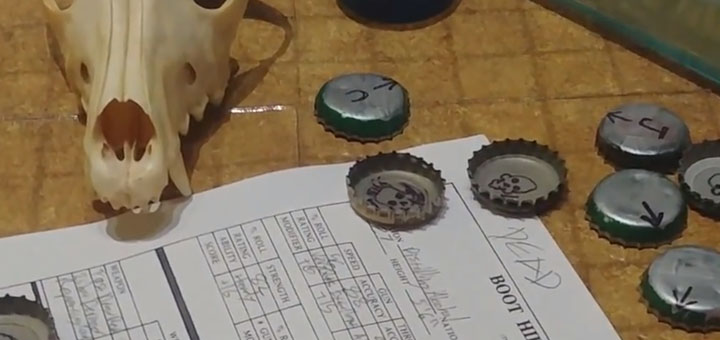
Here’s a question: if your players asked for a campaign of politics, deception, and intrigue, what rules system would you use?
You don’t just want mechanics that are politically flavored and labeled; you want a ruleset that encourages the appropriate qualities and disposition in your group. You want players to be prudent, ambitious, ruthless, calculating, paranoid. You want them to respect their enemies and balance alliances carefully. Above all you want the constant, thrilling tension wrought by a high-stakes duel of wits: a deadly game where a single misstep in a dark alley could end an entire dynasty.
How many discrete skills would you want for persuasion: one for diplomacy, bluffing, and intimidation? Just one that covers all social interactions? Do you want a system that mechanizes factions as assets and story threats, like Blades in the Dark, or as mechanical artifices, like Apocalypse World? Do you discourage players from fighting recklessly by choosing the system that places little emphasis on combat, or by choosing a game where even if the players grow strong there will always be someone naturally stronger?
Above all else, how will your ruleset immerse, captivate, and terrify your players?
There are few wrong answers. No matter how wrong some might seem.

So Boot Hill is a cowboy miniatures game from the 1970s.
The basic rules are pamphlet-sized. Players randomly generates gunmen to shoot at each other with unexpectedly realistic firearms. Though a “powerful” character might tend to go first or hit more often, where they hit and how much damage they do has nothing to do with character (or player) skill. All hits debilitate, and a fifth of the time they’ll kill outright with no recourse for the victim.
In this superlethal system, there’s only one distinction between main characters made by the players and adventure-fodder generated by the “referee,” and it’s not nearly as dramatic as you’d think. Players add a small bonus to their “raw” scores, ensuring that they won’t be terrible at anything and may even be quite good at some things. This would give players an advantage…if referee characters were not rolled to suit a range of stats appropriate for their archetype, such as bandit, gunfighter, or saloonkeeper. In practice, opponents created by the referee will be probably be stronger than the average player character. Just as the first Dungeons and Dragons was too bitter and hardcore to simulate most fantasy novels, one cannot imagine a Bonanza campaign lasting beyond a few surreally brutal vignettes.
This shouldn’t be surprising. Though it was recognized as a roleplaying game by the time its second edition was released in 1979, Boot Hill was very much conceived as an old-school, Gygax-designed TSR wargame. There are no skills, attributes, guides, or systems in the early editions unrelated to stacking up bodies. Mechanically, all it simulates is violence.
Boot Hill is the best political intrigue system I’ve ever used.

I first ran Boot Hill as a joke. My group used to contemplative roleplay-heavy gaming found it amusing to whip out an ancient cowboy shootbang while we waited for the rest of the group to arrive for one-shots. It took most of our trip through the prepackaged OK Corral gunfight to come to grips with the rules, but unlike many of our historical dives into antique systems, it was not boring. Far from it.
Every other time someone picked up the dice something gruesome happened. Abdomens and heads burst, arms flapped bloodily into uselessness, legs collapsed, hearts were split in two. One hit with a shotgun had such a terrible effect it was hard to envision the victim as anything but a pair of gory chaps slumping torso-less to the dirt. There was a real thrill and spectacle to going from an entirely functional combatant one moment to a slab of meat in the span of one roll that was totally outside your control. Not a bad game for one-shots and goofs; too bad this level of violence wouldn’t be supportable with a recurring cast of characters.
When the group had convened, I offered up a few games for one-shots. None particularly appealed. One by one, we found ourselves lukewarmly drifting back to the Boot Hill rules. The newly-arrived players were morbidly curious to see what the fuss was; the rest of us, to find out how fast we could get our own characters killed.
I elected to referee and structured the game as a traditional adventure. Using the guidelines for non-player characters, I improvised a quest, adversaries, and nonviolent NPCS for the player’s rather unformidable characters to explore. Thanks to an innocent misunderstanding, some of my nonviolent characters did end up fighting the party, but statting them on the fly was straightforward. All in all, it was a very enjoyable session.
No party members were killed in the two combats we had time for. It was clear this would be totally unsustainable—more so than in almost any other RPG. Tactics and ambushes aside, sooner or later there were going to be PC deaths. Despite this, and to their own surprise, the players unanimously expressed a desire to take their characters into an honest, no-fooling, root’n’tooting cowboy-shooting campaign.
Which left me with a unique challenge: without changing the rules, how was I to create an excitement-packed Boot Hill game that wouldn’t overfill the graveyard?

When looking to get the most from a system, particularly one that shipped without a concretely-stated philosophy of play, it helps to ask: what unique advantages does this game’s structure offer? What can you do with this system that’d be difficult to do with any other?
I stumbled onto an answer when I created my own Boot Hill character generator. Once the tedious work of programming each NPC archetype’s stat ranges into the tool was complete, I found I could turn out fully-functioning cowpokes with two clicks of a mouse. In an improvised game, this could be used to create NPCs to suit any immediate need. But I wasn’t improvising; I had plenty of time.
So I created a town.
When GMs say this, they usually mean they created the narrative of a town: a pencil map, a few key buildings, a dozen significant NPCs. But my hyperefficient tool lent itself to a more extreme approach. My goal became to marry the organic, procedurally-generated detail of a videogame like Dwarf Fortress with the human consciousness and genuine reactivity of a tabletop game. My town would have hundreds of named characters—and nearly as many grudges.
I began by digging out an old fire insurance map of Tombstone, Arizona, a late 19th century silver mining boomtown. There were several practical reasons to choose Tombstone as my template: the town is extremely well-documented, it reached a large population, it had conveniently gridded streets, and I already knew quite a bit about it. But the most important consideration was one of narrative. The economics of silver mining meant that Tombstone was in a state of constant tension between the wealthy capitalists who profited from silver mining and the rural roughnecks who mined, ranched, and (not infrequently) engaged in organized crime. Creating these factions in their entirety, down to the last investor, miner, gunfighter, and rancher, would give me all the toys I needed to arrange a network of allegiances and conspiracies for my players to stumble into.
I began by deciding what kinds of characters I would need for various locations and factions: the staff and guests of a major hotel, the county politicians, the magnates and their posses, the criminals and their connections, etc. I’d come up with period-and-setting appropriate names and then generate random stats for each. My data was limited: I’d learn how good they were at shooting and throwing, how tough and fast they were, how brave, and how many dangerous fights they’d been in (which, for most characters in the town, was “none”). Of these stats, bravery was the only one relevant to every character. Of course I could have programmed a few “junk” stats of my own—kindness, guile, wealth, charisma—but I elected not to. This wasn’t just out a sense of purism or laziness, though both were factors. Instead it seemed appropriate that everyone in the town—regardless of their profession or background—should be defined first and foremost by their courage. The rest, I trusted, would emerge through roleplaying.
I baked violence, fear, greed, and vanity into every level of the region. I filled the badlands with an organized crime network, the Roundup Boys, and carefully noted their relatives and connections within the town—especially relations the characters were likely to meet. I made two opposing railroads and gave each its payroll of enforcers, toughs, and hitmen. I decided that the Lewis, Chicory, and DeMorgan railroad was represented in town by one of its cutthroat owners, but Western United only by its founder’s naive son. Finally—of course—I went straight for the high-octane templates and created a list of the top ten most dangerous wanted criminals in the Arizona territory. Most were not local to my town, but a few were, and many more were connected to its smugglers, importers, and crooks. Naturally, both Western United and Lewis, Chicory, and DeMorgan had quietly hired a top killer for their staffs.
Everywhere in town, I stretched tensions as thin as they’d go. Here, a deeply crooked and vicious campaign for sheriff. There, “respectable” business owners versus “rowdy” roughnecks. In the boonies, robbers versus marshals, marshals versus deputies, robber gangs versus robber gangs, a gangs robbers versus its robbers. A powder keg of a county, always ready to blow.
Then I dropped the players into it.
It may seem like my goal was to create as many combats as possible, but that’s not true at all. I knew that if PCs died every few minutes and there was no continuity of story, even gory Boot Hill combat would grow boring. Instead I designed my setting to offer the constant threat of violence: the tension of knowing that a sudden and fatal battle might result from any misstep.
After all, a powder keg’s more thrilling when it hasn’t blown up yet.

Not many games discourage players from pissing off NPCs. The worst thing an aggrieved character can do is fight you, and that’s just where most RPG characters are built to succeed. I know from personal experience that, roleplaying aside, it’s tempting to conclude: “I’m going to fight this douchebag eventually. Why not get it over with now?”
Played ruthlessly, Boot Hill‘s mechanics and milieu produce very different expectations. That any character can die easily in a fair fight is almost a moot point; if you provoke a cattle baron or a slimy industrialist or a crooked sheriff, he’s not going to get his henchmen and fight you fairly. He’s going to pay someone to shoot you in the back with a shotgun, and if you’re not ready for it, that’s not much better than a death sentence. The only reason the streets aren’t awash with blood at all times is that the NPCs are also hapless mortals that have to watch where they step. That’s another reason to fill the setting with conflicts rather than prebuilt adversaries: the PCs stand to live longer if there’s a balance everyone else fears upsetting.
Faithfully roleplaying the game’s emergent “villains,” or the characters willing to risk death and murder to get their ends, comes with a set of broadly-applicable rules. Don’t fight unless the rewards or risks are too great to avoid it. If you’ve got power or money, abuse it to keep yourself safe and your interests protected. Confront enemies directly only when you’ve got the force to bully them into backing down or surrendering; otherwise, strike from ambush. Use the extent of your cunning or guile. Be wary of crossing other powerful interests, like the law or organized crime; strike surgically whenever possible. Wait for the right moment.
Very naturally, the players found themselves observing the same rules.
In the pre-campaign session, the one I’d improvised half-jokingly, a shady roadhouse outside of town had been shot up and depopulated. The players kicked off the campaign by going back to salvage some bourbon stills so they could start a business in town. Arriving in the night, they discovered a group of Roundup Boys had the same idea. Having no capital, no connections, and no means to speak of, the party concluded that they might as well take a risk and fight for it.
There was a bitter and violent struggle, but thanks to an ambush, the party won with only injuries. Eager to avoid any vendettas, they set up the bandit corpses to make it look like they’d killed each other through infighting. In most systems this would oblige some sort of deception roll, but in Boot Hill all I had were my notes and my judgment. I asked the players to diagram how they were setting up the corpses. On one side of the player’s staged battlefield was Colby Lake; on the other, Fry Lake. Bandits got stupid when there was money on the table, but spontaneous fratricide? The Roundup Boys weren’t going to buy that. I made note that the Boys were going to be looking for culprits…and curious where the players got their brand-new stills.
Still! The party’s risk had paid off. Now they had means, money, and the opportunity to gain standing within the town. Within a day or two they had a lot to lose and a lot to gain. The players wouldn’t be picking any more fair fights.
Over the next fifteen hours of gambling, business, political campaigning, backroom deals, and strategizing, the players were involved in—perhaps—five more combats. None lasted longer than fifteen minutes of real time. In one, the players (at the behest of one who’d been elected sheriff) set up and bushwhacked a group they felt would pose a threat. Another PC overconfidently bunked alone in a hotel that disallowed guns and had a balcony to the street; barely, with great skill and luck, he used his knives to turn an ambush against three would-be assassins. The PC sheriff also survived a dark-alley backshooting by a hired gun; finding out who’d hired the gun without catching another bullet made for several gripping hours of play.
Late in the campaign, the Roundup Gang—frustrated with their loss of power in the region—tried to rob the town’s bank and cut their losses. Several player characters were nearby enough that they were able to marshal some of the NPCs they’d deputized and respond appropriately. Trapped behind the bullet-ridden double doors, the gang’s leader took hostages and negotiated for the sheriff to provide horses. He did. As the gang tried to ride away, he signaled his deputies to gun down every one of them.
Up until the very end, this was every combat the players were involved in. But that’s not quite the same as saying it was every combat in the game; just the only one the party deigned to be involved with. An alliance with a vulnerable group in the town was cemented when both the mayor and sore-loser candidate were murdered the night before both would be witnesses in a PC’s murder trial, and at no point did anyone but me pick up the dice. When a player character began seducing the naive railroad heir, trying to mold him into a useful asset who didn’t follow his father’s orders, she was wise enough to know his father would do something about it; one night she saw a shadow approaching her window, then heard a shot. The assassin had been foiled by her prudently-hired NPC bodyguard. These dice transactions took seconds on my end, but the tension as players waited to see how their deals and gambles had paid off could be milked for minutes or even hours.

In the game’s final session, the many-times-triumphant and increasingly aggressive sheriff PC received word of an outlaw a day’s ride away. He took another player character and two NPCs he’d deputized along to check it out, but found nothing. Eager to return in time for a critical event, they rested briefly and retraced their steps home.
They were halfway down Meer Canyon when the first gunshot sounded. Then it became a chorus: twelve rifles firing down at them from the ridge, horses screaming, deputies howling as they were hit in the arm, the abdomen. As the NPC allies broke and fled desperately, the sheriff’s PC confidant was struck in the head and fell off her horse. He leapt from his own and tried to drag her to cover, hoping she wasn’t yet truly dead. A bullet struck him in the heart and killed him.
I wouldn’t normally end a player character like that, let alone two at once. In most games it would be an ignominious and frustrating end to a story. But for this story, for this campaign, it worked. It was the ending that was earned: the ultimate escalation of a war between bitter and heartless people. It was thrilling, tense, and an epic finale that did justice to the danger both characters had been in the entire time.
And it was not, in the end, the ultimate escalation. The surviving deputies brought word back to the rest of the party, who marshaled their allies and made a last desperate appraisal of their enemies.
In the final hour, flames consumed the town I’d built.
So once again: what makes for good intrigue in a tabletop game?
There must be many diverse agendas and moving parts to navigate. Players should know they should step carefully and never be certain how well they’re succeeding. They must feel the consequences of failure, but also that these fates are fair and not arbitrary.
For all of these considerations—to my earnest surprise—Boot Hill proved an ideal system.
That the game has simple randomly-generated combat stats helped me design a thorough, reactive campaign setting. If the game had classes, levels, races, or tactical options, I would be obliged to either create combatants by hand or study each in detail, limiting my precise grasp on each faction and their strengths. If the game were even simpler, like Apocalypse World, the players would know too well what to expect from their opponents. Instead I found myself perfectly between the two extremes.
The vicious, tense, and bloody combat made players very afraid of the consequences of mis-stepping. There was a fear, a tension, a thrill every time they even picked up the dice; if they were attacking they knew they were taking a great risk, and if they were being attacked, they knew they may have made their last mistake. Between these isolated combats there were no rules or clattering of dice to distract them from playing their characters and angles; the immersion was total.
There was another benefit to not having any social mechanics at all in the game, counter-intuitive thought it might seem for a game about managing adversarial relationships without combat. While combat in Boot Hill is decided immediately and obviously, and is thus very well suited to open dice rolls, the game’s social conflicts created tension by being uncertain. One never knew whether to trust an NPC, whether an NPC trusted them, whether a bluff had succeeded, or whether a threat had landed. They had no reason to expect success because a number was high or failure because a number was low. Instead, I simply presumed that each PC was reasonably charismatic and putting their ideas as well as possible. From this position I used my well-developed understanding of the game’s NPCs to determine whether they would be fearful, greedy, honest, smitten, lonely, tempted, or reasonable enough to be persuaded. I would never argue against social mechanics in general, or even in most campaigns, but stripping them from play here made for a tenser and more engaging experience.
Running a largely social game with Boot Hill caused me to re-evaluate my feelings on the relationship between mechanics and gameplay. Design is very much not destiny, and the developer cannot possibly guess at all possibilities inherent in a ruleset. It falls to the GM to react to what works well, read their players’ interests, and experiment with new ways of constructing adventures.
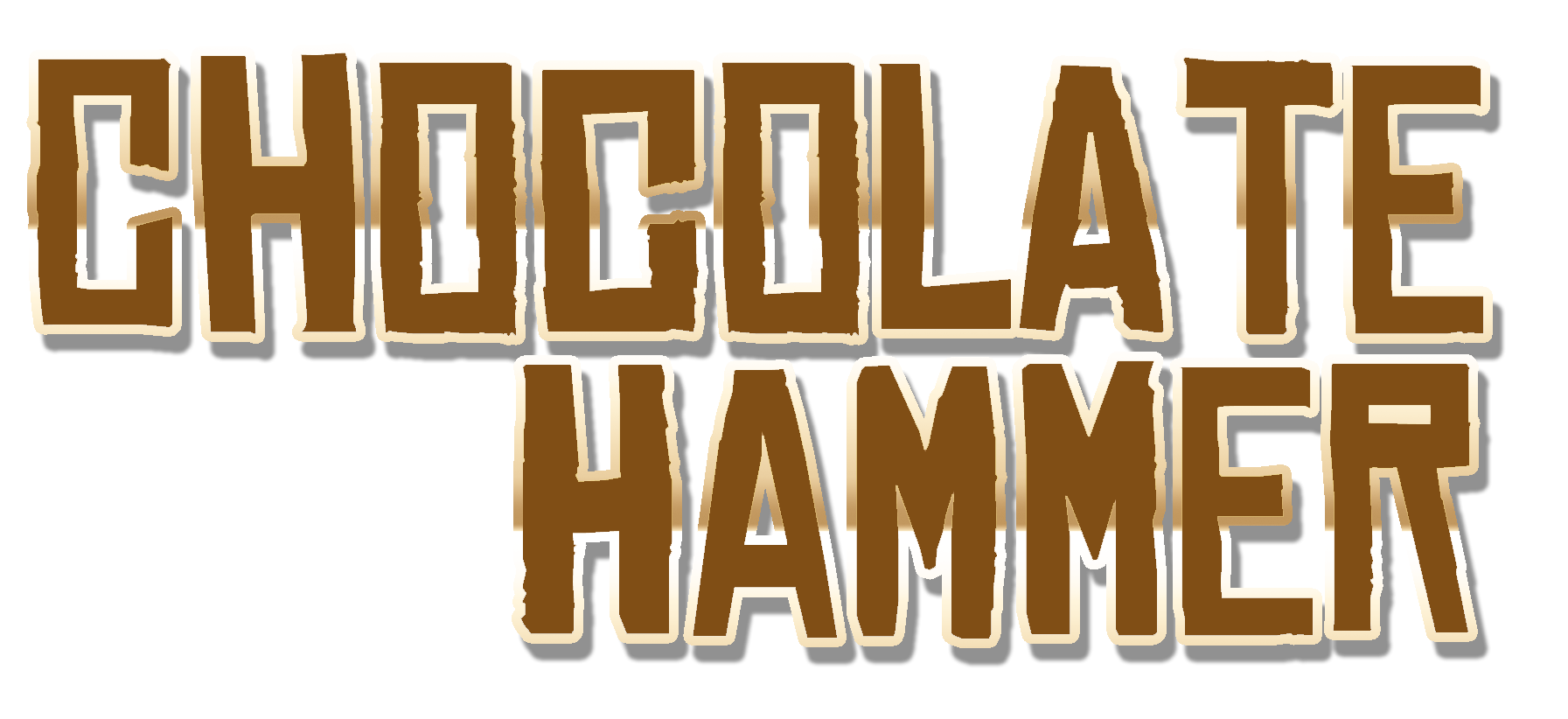
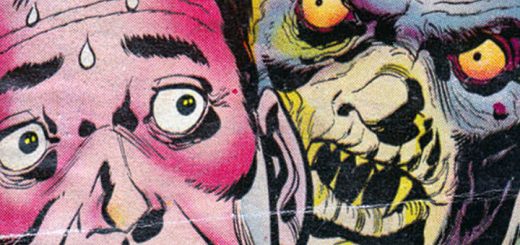
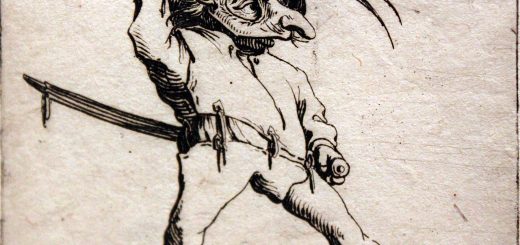
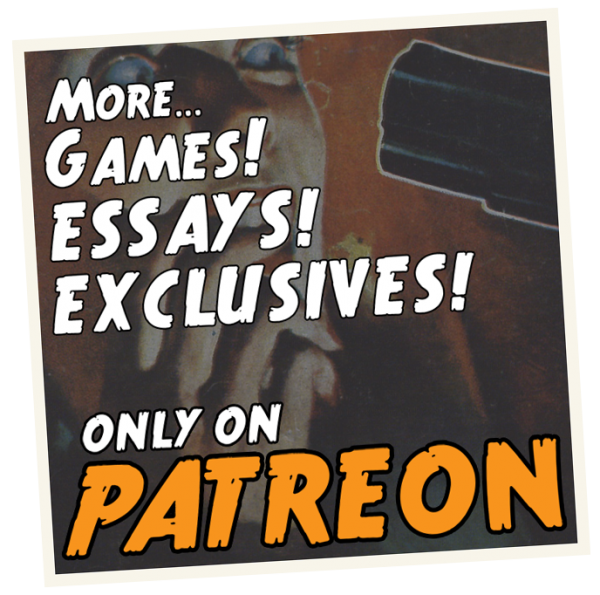


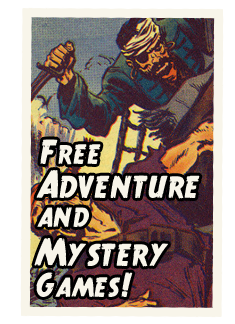
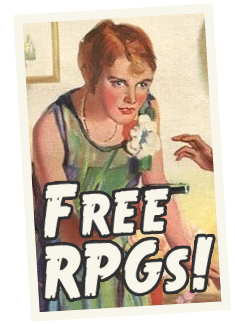
In order of appearance, the images are from:
Boot Hill (2nd Edition), artist not credited.
Return of the Outlaw (Issue 2, 1952), uncredited.
Western Bandit Trails (Issue 2, 1949), Matt Baker.
Return of the Outlaw (Issue 5, 1954), uncredited.
Western Bandit Trails (Issue 1, 1948), uncredited.
I cannot vouch for the quality of any of these works (except Boot Hill). To my knowledge, each comic is within the public domain.
That sounds like it was a very fun and rewarding experience. However, it would most DEFINITELY require the right set of players and GM to work out the way it did. I highly doubt trying to run a campaign like that would fly in my gaming group.
In my history of running games, I’ve generally been left feeling empty when I’ve called for, or the players used, a social skill to determine the outcome of an encounter. Which led me to use the following thought experiment when I sat down to work on my own rules systems: what actions can be role played, and which ones can’t? Only if an action can’t be role played would it get a game mechanic. Suddenly, social skills, mental attributes, and so on left the building. This sounds like the same thing, if not deliberately done that way.
I wish that I’d had the role playing sophistication I have now when I encountered Boot Hill when I was 12 or 13. But, back then, all I saw was an incomplete RPG.
Cool article!
You kind of played the type campaign Boot Hill Second Edition at least implies it’s made for.
It’s very much “here’s a town, let the players be the leaders of a bunch of opposing factions/roles, and the intrigue and chaos will begin shortly.”
Though, it relies on having a lot of players (the book mentions as many as 20), as a sort of quasi-RPG wargame, similar to what I’ve heard a “Braunstein” was like. So you likely wouldn’t be traditionally GMing as much as coordinating secret movement and settling disputes.
Again, fascinating article! I am tempted to make my own town now.
Holy shit! Great writeup, you make me want to try this!
What a great write up.
I just ran a Boot Hill one shot for my friends, and now they want me to stretch it into a campaign.
I know this is an old post, but would you be willing to share out your work or notes or up something up on Drive thru?
Because I am totally doing this !
Ran Boot Hill quite a bit, 2nd edition, specifically because there are no stats for intelligence, charisma, etc., and everyone could roleplay his character however he saw fit, limited only by his physical abilities in the game.